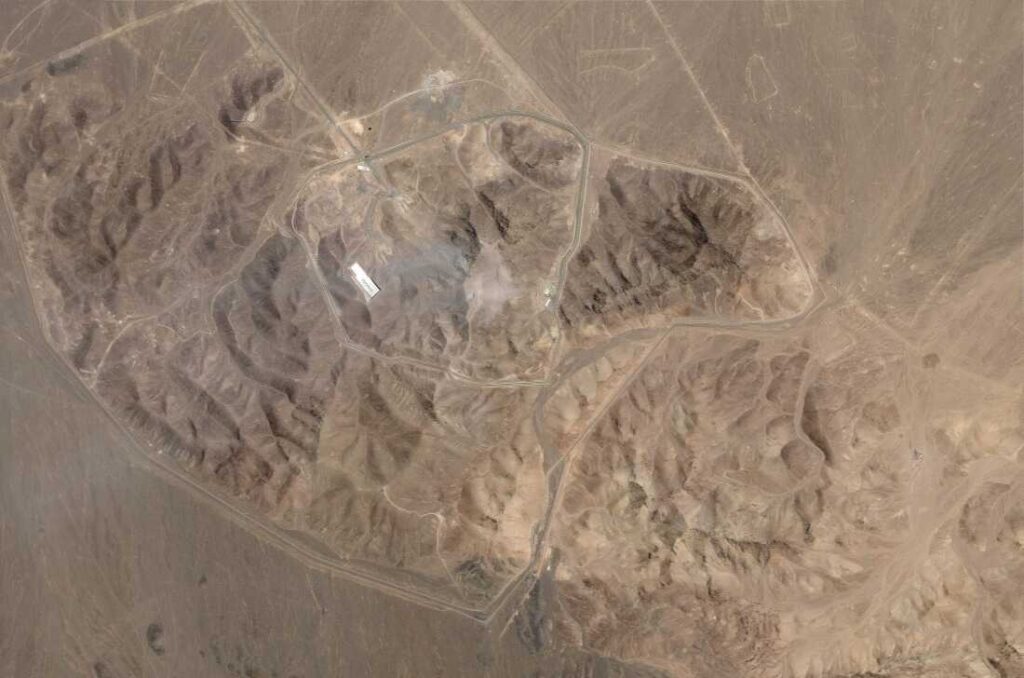U.S. military aircraft and naval assets struck three of Iran’s principal nuclear facilities—Fordow, Natanz and Isfahan—just after midnight local time on 22 June 2025, deploying bunker-busting munitions and cruise missiles. President Donald Trump described the operation as a “spectacular military success,” claiming that the sites had been “completely and totally obliterated.” He cautioned Tehran that further targets would be hit if it failed to pursue peace.
B-2 stealth bombers dropped Massive Ordnance Penetrator bombs on Fordow and Natanz, while a U.S. submarine launched over two dozen Tomahawk missiles at Isfahan. Satellite imagery reveals large craters and damaged tunnel entrances at Fordow, although Iranian officials say the subterranean facilities may remain intact.
U.S. officials assert the strikes significantly degraded Iran’s nuclear enrichment capabilities, though robust assessment of full destruction will take time due to the sites’ depth and unknowns regarding whether key materials or staff had been evacuated in advance.
Washington maintains the operation aimed solely to halt Iran’s nuclear development, not to install regime change, though President Trump has warned of further action should Iran retaliate. The United Nations, European Union and several countries, including Pakistan and China, have expressed deep concern, warning of regional instability and the legal ramifications of striking civilian nuclear infrastructure.
China’s state media described the strikes as an “irresponsible escalation” and raised doubts about whether the bombing achieved underground destruction of hardened nuclear assets. The Financial Times cited IAEA data indicating that off-site radiation levels have not increased, although internal alpha-particle contamination at the sites has been detected—something experts warn could pose health risks if not contained.
Market responses have been cautious over the weekend, with oil prices edging higher amid fears of supply disruption in the Strait of Hormuz, and cryptocurrencies dipping—Ethereum fell over 5%, Bitcoin around 1%. Analysts have flagged potential spikes in oil, with prices possibly breaching US$100 per barrel if Iran retaliates by targeting shipping lanes.
Israeli Prime Minister Benjamin Netanyahu praised the U.S. campaign coordination and commended Washington for reinforcing its stance against prioritising peace over proliferation. In Tehran, officials condemned the attack as a betrayal of diplomacy; Iran’s foreign minister warned of “last consequences,” while Supreme Leader Ayatollah Khamenei’s whereabouts remain undisclosed due to security concerns.
Analysts from the Atlantic Council noted that the U.S. intervention gives Tehran a choice: pursue limited retaliation—potentially via proxy groups—or face increasing pressure and possible diplomatic marginalisation. The strike also signals U.S. willingness to deploy long-range capability against deeply buried facilities, sending a broader message to actors like Russia and China.
Despite the tactical justification offered by Washington and its allies, legal and strategic experts question whether burdening peaceful nuclear infrastructure might violate international norms and escalate conflict. The U.S. operation has heightened threats to American military and diplomatic assets across the region, prompting elevated alerts at bases and embassies.
Civilian concerns have surged in Iran amid fears of radioactive contamination, though authorities insist no off-site radiation threatens nearby populations. In Israel, the public responded with a mix of apprehension and support, with some Tel Aviv residents expressing alarm yet overall approval of U.S. commitment.
As Monday’s emergency IAEA session approaches, attention turns to Tehran’s next move. Its calculated response—whether via military, proxy or diplomatic channels—will determine if the conflict spirals outward, holds at a tense impasse, or opens a narrow path toward negotiation.




 Hormuz chokepoint move escalates Middle East crisis
Hormuz chokepoint move escalates Middle East crisis 